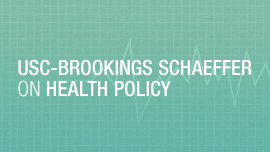During remarks at the University of Arkansas for Medical Services last Thursday, newly minted Arkansas Governor Asa Hutchinson announced the continuation of Arkansas’ innovative Medicaid coverage approach, known as the “private option,” albeit with somewhat unclear plans for the future beyond 2016. The election of Hutchinson in November, a republican, led to much speculation about the future of the program and its likelihood for repeal, (we found that possibility unlikely) particulalry since it was developed and implemented under former democratic Governor Mike Beebe.
The Governor’s announcement indicated that he plans to ask the state legislature to maintain the program, as it requires a three-fourths majority in both chambers, but also investigate improvements. It’s also quite possible that the Governor is interested in using the Arkansas program as an engine for further reform, and will likely seek to put his stamp on it and continue it.
Hutchinson was quick to point to the program’s success: a 10 percent decrease in the uninsured rate, $69 million in uncompensated care savings, and a 47 percent drop in hospital visits from the uninsured. He noted that while the state saved $88 million in 2015, once the federal match of Medicaid expansion drops from 100 percent to 90 percent, the program’s “gross” costs would reach well over $200 million. It is likely though that the actual cost is much less, after taking into account savings in uncompensated care, premium tax revenue, macro-economic impacts, and other factors.
The cost issue inspired the Governor’s two key action items for the legislature: (1) maintain funding for the private option through December 31, 2016, and (2) establish a task force to explore options for developing an alternative model that does not compromise coverage for individuals in the program, but is able to reduce the program’s cost burden. He expressed concern that providers and stakeholders should not be faced with a perennial threat of a program shutdown, so the task force will be charged to develop a plan for an innovative and sustainable Medicaid program, both new and traditional. A full report of their findings will be required at the end of 2015. The Governor will also direct the Department of Human Services to assess opportunities to improve services for high-risk, high-cost Medicaid beneficiaries, and to use private sector expertise to identify program waste, fraud, and abuse. This is essential, because new enrollees take up a comparatively small portion of the Medicaid budget, and any reform need to look at the program as a whole.
So what should we take from this announcement?
At first glance, this might seem like threatening news for private option supporters– is it dying a slow death? Not at all. The program would have been up for reauthorization at the end of 2016 anyway, and in 2017 a broad new waiver authority under Section 1332 of the Affordable Care Act comes into play. This little known but potentially game-changing ACA provision gives states vast flexibility in the design of their ACA marketplace programs, and charges the Federal Secretary of HHS to develop a coordinated process for what are now a series of segmented negotiations in Medicare, Medicaid, CHIP, as well as the new ACA marketplaces and any other Federal law related to the provision of health care.
Elsewhere my colleague Stuart Butler has written about the potential for this provision to allow a governor to reshape the health care landscape. Many states have already announced plans to apply for this waiver, and it is expected that Arkansas will be one of them. The health task force that the Governor recommended will be well-positioned to gather data over the next year (such as real costs from 2014 and potential savings from reduced churning between Medicaid and the exchange) to help develop proposals for a broader approach to state health reform. The timing would be perfectly aligned for when the 1332 waivers kick in.
Waivers of federal law are ultimately negotiations between the state and the federal government. Once the Supreme Court converted the Medicaid expansion under the ACA from a federal requirement to a state option, the dynamics of these negotiations changed drastically. The simple reality in many states, such as Arkansas, is the state could not enact a straight expansion of Medicaid as the ACA originally envisioned. A key goal of the Administration is to realize the expansion of health insurance coverage the ACA was intended to bring, and so the reality is the state seeking flexibility in how it expands coverage has a great deal of influence. If the Supreme Court in the King case were to rule in favor of the argument that Federal tax credits are only available in a State exchange, that could similarly strengthen States hands in negotiating broader waivers under section 1332.
Another important factor to keep in mind is that a state such as Arkansas could decide to drop the expansion of coverage. This would not be easy to be sure, as thousands of people would lose health insurance, providers would take a hit to their bottom lines, and the state would lose out on millions of dollars in federal assistance.
Regardless, because this program is run by a waiver, and has a three-year life span, the state has an opportunity to renegotiate the program in 2017. 2017 is also the first year where the federal support for the expanded coverage drops from 100 percent to 95 percent. While this is a still an exceptionally rich level of federal funding, and the net benefits from the expanded health insurance coverage in the State are in my view overwhelming, it is also possible that the Governor is shrewdly positioning himself to negotiate further changes that will help insulate the state from paying even a share of the costs.
The Brookings Institution is committed to quality, independence, and impact.
We are supported by a diverse array of funders. In line with our values and policies, each Brookings publication represents the sole views of its author(s).




Commentary
Arkansas Governor signals uncertain but hopeful future for Medicaid “private option”
January 28, 2015